- Home
- Neal Stephenson
Atmosphæra Incognita Page 4
Atmosphæra Incognita Read online
Page 4
“Over cover?” I asked.
Roger broke the long silence that followed. I don’t know, maybe it was that British penchant for wordplay. “What’s coming up from beneath?” he asked. “And how’s it going to get through the floor?”
“High-energy gamma ray bursts,” Nicky said, “and some antimatter.”
“Antimatter?” several people said at once.
“I’ll explain while you’re donning,” she said, and started backing toward the exit. “I’m afraid you’re going to have to put down your drinks.”
Donning, as most of us knew, meant putting on space suits. It was to living on the Top Click what the life vest drill was to an ocean cruise. Thanks to the space tourism industry, it had become pretty idiot proof. Even so, it did take a few minutes. They were stored in a vestibule, which for very sound reasons was a sealable windowless capsule. Nicky insisted we drag them out into an adjacent sky lobby—a future restaurant—with big west-facing windows. She wanted us to get a load of the storm.
And this bore no resemblance to watching a storm approach on the ground. We’ve all done that. From a distance you can look up into the structure of the high clouds, but as it gets closer all is swallowed in murk. Lightning bolts, hail, torrents of rain, and wind gusts jump out at you from nowhere.
Here, we were miles above the uppermost peaks of the anvil clouds, enjoying an unobstructed view of outer space. The Milky Way shot up like an angled fountain above the storm front, which from this height looked like a layer of ground-hugging dry ice fog in a disco. Sometimes it would glow briefly.
Nicky’s warning had put me in mind of nuclear war and so I had to wait for my logical mind to catch up and tell me that those flashes were nothing more than lightning bolts, seen from above.
Nicky had turned toward me—but she wasn’t looking at me. She was staring unfocused. “They’re easiest to see in your peripheral vision,” she remarked. “They’ll be very high up—in space.”
“What are you talking about?” Dave demanded. He wasn’t handling this especially well. Fortunately Hiram interceded. “Sprites,” he explained. “We see ’em all the time.”
From anyone else this would have provoked a sarcastic rejoinder from Dave. Coming from a crag-faced, 250-pound Mohawk, it took on more gravity.
“Oh!” Tess exclaimed.
I heard the smile in Nicky’s voice. “Big one there!”
“Where?” people were asking.
“It’s already faded,” Nicky said. But then I saw a disk of red light high up, which expanded while darkening in its center, becoming a scarlet halo before it winked out.
I turned back to Nicky to ask a question, which never made it out of my mouth as something huge registered in my peripheral vision: a cloud of red light, jellyfish-like, trailing hundreds of streaming filaments. By the time I had snapped my head around to focus on it, this had shrunk to a tiny blob that went dark.
Within a minute, everyone had witnessed at least one of these sprites and so all questions as to Nicky’s credibility had gone away. For the most part they all faded in the blink of an eye. But sometimes, ghostly orbs of blue light would scamper up the red tendrils for a few moments afterward, prompting gasps of delight. These I heard over the wireless voice com system built into my suit—by this point I had my helmet on.
Nicky was watching their reactions uneasily, clearly wishing they would take this a little more seriously. “A couple of decades ago,” she said, “some of our orbiting gamma ray observatories began picking up incredibly powerful bursts. Long story short, it became obvious that these were coming not down from deep space but up from below—from the earth. So powerful that they maxed out the sensors, so we couldn’t even tell how massive they actually were. Turned out they were coming from thunderclouds. The conditions in those storm towers down there are impossibly strange. Free electrons get accelerated upward and get kicked up into a hyperenergetic state, massively relativistic, and at some point they bang into atoms in the tops of the storm towers with such energy that they produce gamma rays which in turn produce positrons—antimatter. The positrons have opposite charges, so they get accelerated downward. The cycle repeats, up and down, and at some point you get a burst of gamma rays that is seriously dangerous—you could get a lifetime’s worth of hard radiation exposure in a flash.” She paused for a moment, then stared directly at me with a crazy half smile. “The earth,” she said, “is an alien world.”
The story was jogging memories. This was one of those “gotchas” that had come along halfway through the project and precipitated a crisis for a few weeks. The hard part, actually, had been getting Carl and the other top decision makers to believe that it was for real. The engineering solution hadn’t been that complicated—shield the floors of the buildings with radiation-stopping materials, and, during thunderstorms, evacuate any parts of the structure that hadn’t been shielded yet—
“Thank you,” I said, “you’re a sharp one.”
Nicky nodded.
“What is your idea? Why are we donning?” I asked her.
“There’s a place over in the depot where some plate steel has been stacked up—I reckon if we huddle on top of that, it should stop most of the gamma rays coming up from the storm.”
Roger had been listening intently to all this. In a weird burst of insight, I understood why: Alexandra was pregnant. She wasn’t showing yet. So there was no real evidence to support my intuition. But she had declined the offer of a drink, which was unusual for her, and there’d been something in the way she and Roger looked at each other… Carl’s grandchild was up here, taking shape in her womb. We had to get her over cover.
The depot that Nicky had spoken of was the old construction materials dump, near the middle of the Top Click. It was all out in the open, which was why we’d had to don in order to get there. In a few minutes’ time we were all able to put on our helmets and let our suits run through their self-check routines. We stepped out into an airlock and experienced the weird sensation of feeling the suits stiffen around us as the outside pressure dropped. They were awkward to move in, and none of us was really trained in their use—they were for survival purposes only. For that reason a number of electrically powered scooters were parked in their charging docks right outside the exit. We merely had to waddle over to them, climb aboard, and then steer them away. In an ungainly queue we followed Nicky in a circuitous path among buildings-in-progress. Shortly we arrived at the depot and followed her to a place where corrugated steel floor panels had been stacked up in neat rectangular blocks almost as tall as our heads. Hiram, who of all of us was most adept at moving around in a suit, clambered up onto the top of a stack and then reached down to pull the rest of us after him.
The view here wasn’t as good, but none of us doubted Nicky’s judgment as to the gamma rays, so we didn’t mind. Soon the most intense part of the storm was passing beneath us. We could tell as much from the fact that the red sprites were directly overhead. Most of us ended up lying on our backs so that we could gaze straight up and watch the light show.
We had taken all of these precautions for one reason: to avoid exposure to gamma radiation. The storm was nowhere near us. Far below, winds were buffeting the lower structure, but we didn’t even feel it. Our view down blocked by tons of steel, our only clue that a storm was in progress was the sprites blooming tens of thousands of meters overhead.
All of which made the superbolt just that much more surprising.
Of course, we didn’t know it was something called an “upward superbolt” until much later. At the time, I just assumed that I was dead for some reason, and that the transition to heaven, or hell, was a much more jarring event than what tended to be described by survivors of near-death experiences. My next hypothesis was that I was still alive, but not for long—I remember reaching up to touch my helmet, fearing that it had popped off. Nope, it was still there. Then, for a minute or two, I was convinced that terrorists had set off a small nuclear device somewhere on the Top C
lick. Buildings were damaged, debris—glowing hot—was cascading to the deck. Finally my ears recovered to the point where I could hear Nicky saying “lightning,” and despite all of this chaos some part of my brain was registering the schoolgirlish objection that lightning was a cloud-ground interaction, and we were not between the clouds and the ground, so how could that be? Now, of course, I know more than I want to about upward superbolts: another fascinating middle-atmospheric phenomenon that Nicky hadn’t gotten around to lecturing us about.
Shock and awe only last for so long and then you begin to take stock of reality.
The First Bar in Space was mostly gone. The superbolt had melted a hole through its floor and roof and it had explosively decompressed, vomiting its contents—barstools, dartboards, Carl’s ashes—into space. So Nicky’s precaution about the gamma rays had not only saved us from a stiff dose of radiation but, by dumb luck, kept us from being blown to bits and sprayed across the desert.
Several other buildings were no longer shirtsleeves environments. Some looked undamaged. Safety doors ought to have slammed down in the tube network, preventing depressurization of the whole Top Click. When the storm had passed and the danger of gamma rays was over, we’d move into one of the undamaged structures and wait for rescue.
In the meantime, we were in for a wild ride, because the tower had begun swaying and shuddering beneath us.
Panic would have been too obvious. I confess I was headed in that general direction, though, until Hiram’s voice came through: “I don’t care how big the lightning was,” he said. “I rode that steel up and there is just no way it could have taken that much damage.” He rolled off the stack of plates and let himself down to the deck. “I’m going to go have a look.”
What the heck. My kid-having days were over. I had responsibilities. First and foremost to Carl’s grandkid-in-the-making.
“Emma, what the heck?!” Tess called.
“The storm is over, baby,” I said, and followed Hiram, who let me down easy to the deck.
Some touristy impulse led us straight to the wreckage of the First Bar in Space. We dropped to our knees and approached the hole in the deck on all fours.
Staring down through the hole, we could see, a couple of kilometers below us, something like a Venetian blind that had been attacked with a blowtorch. Several of those burnished-aluminum airfoils had been blasted by the superbolt. A huge strip of aluminum had peeled away from one of them and gotten wrapped around the one below it.
“Well, there’s your problem,” Hiram pronounced. “No wonder the tower ain’t flying right.” As if on cue, the structure lurched beneath us, eliciting squeals of horror from our friends back in the depot.
“Is it dangerous?” I asked him. Because one of the advantages of being a middle-aged chick in this world was the freedom to ask questions that a young male would be too insecure to voice.
“To people below? If some of that crap falls off? Sure!” he said. “To us? Nah. Structure’s fine. Just ain’t flying right. Only real risk is barfing in our helmets.”
I wasn’t about to second-guess Hiram, who had ridden the tower up from day one and had a strong intuitive feel for what made it stand up. But uneasy memories were stirring of briefings, years ago, about top-down failure cascades. The classic example being the Twin Towers, which had collapsed in toto despite the fact that all the initial damage had been confined to their upper floors. Debris from a high-level event could damage structural elements far below, with incalculable results. The thin, almost nonexistent atmosphere up here would allow debris to fall at supersonic velocity. Energy, and damage, would increase as the velocity squared…
Where was the problem, I wondered, that was preventing the tower from “flying right”? Had the superbolt fried the electronics? Jammed a mechanism? Bent a control surface?
Which caused me to remember one other detail from earlier in the evening…
“Crap,” I said. “There’s a guy down there. Working on the system. Joe. An engineer. I hope he’s okay.”
“I wonder if there’s any way to reach him?” Tess asked. Reminding me that all of us up here were linked in a single conversation by a wireless mesh network.
“First things first,” I said. “The absolute top priority is patrolling the edge of the Top Click to make sure no debris falls off the edge. Spread out and do that. If you see anything, report it to Hiram. Hiram, you’ll have to jury-rig something…”
“I’ll get a welding cart. Should be great for tacking things down.”
“Everyone should be spreading out now,” I insisted. “Storm’s over, folks. I see clear air below, headed our way. Look for anything that might go over the edge, or get jostled loose by all this shaking. And while you’re at it, look for buildings that are still pressurized, where we can take shelter before our suits run out of air.”
“GOOD NEWS, BAD NEWS,” Dave announced a minute later. “I found a little dome—a construction shack—that still has pressure. But this thing next to it got zapped real hard—it’s about to shed a roof truss over the edge.”
“I know the place. On my way,” Hiram announced.
It didn’t rain up here, so “roof” meant a piece of steel for reducing the flux of cosmic rays. The point being, a roof was a heavy object, and not something we wanted to drop off the top of the tower.
Toddling around in my suit, I caught sight of Hiram trundling a welding cart as fast as he could manage it. These carts weren’t like terrestrial welders. They had built-in engines to generate power, fueled by liquid propane—but since there was little air up here, they also carried their own supply of liquid oxygen. It made an unwieldy package even for a big man like Hiram, but presently Dave waddled over to lend a hand.
Inside, our little refuge was like any other construction site office, decorated with freebie catalogs from tool companies and beer posters featuring sexy babes. Once we got through the airlock and pulled off our helmets, we were able to sit down and take stock. Outside, Hiram was tack-welding the wayward truss into place, assisted by Dave and a contractor who had joined up with our little band. He’d been working late on the top floor of a casino when the lights had gone out and a six-foot-long arc had jumped out of a nearby faucet and connected with an electrical outlet, passing close enough to his head to singe his hair. Once we’d heard his story, we understood why we couldn’t get Internet. But we could make cell-phone calls, connecting, albeit patchily, with towers on the ground.
Tess and Maria the bartender, who knew their way around the Top Click as well as anyone, swapped in new oxygen supplies and went out to reconnoiter for injured stragglers. I was able to get through on the phone to Joe’s boss and hear the troubling, but hardly surprising, news that he hadn’t checked in.
Which was how Roger, Frog, and I ended up abseiling three kilometers straight down the tower’s central shaft on a rescue mission.
Why us three? Well, Frog was the veteran BASE jumper, a little past his prime and above his station, but—bottom line—the only way to prevent him from coming would have been to hit him on the head with a wrench and ziptie him to a girder. Roger, true to his pedigree, had mountaineering experience.
And I knew as much about the tower’s weird little ins and outs as anyone.
The central shaft, which would one day be filled with some as-yet-unbuilt space launch tech, was empty. Ever-pragmatic construction workers had strung long cables down it, like mountaineers’ ropes. They used mechanical descenders to glide down when they wanted to get lower but didn’t have time to mess about with helirails. There were also elevators, but these had all shut themselves off when the superbolt had fritzed their electronics, and there seemed no way to reboot them without getting through to a customer service rep in Pakistan. Roger, the biggest member of our group, slung an extra space suit on his back (these folded up, sort of, into backpackable units, bulky but manageable). This was just in case Joe was in need of one. Hiram showed us how to harness the descenders to the outside of our suits. Each
of us connected to a different cable—there were plenty of them—and then we backed off the rim of the shaft and let ourselves drop.
So this was a tubular vacancy, ten meters across and (currently) seventeen thousand meters long. Walking to the edge of it and looking straight down had become a popular tourist activity on the Top Click. To put this in perspective, it had the same relative dimensions as a forty-foot-long soda straw. As a rule, it was perfectly straight, as if it had been laser-drilled through a cube of granite. Quite a trick given that it was held in place by a wind-buffeted gas of metal.
Tonight, though, it was sashaying. You couldn’t see the bottom from the top. It was like staring down the gullet of an undulating snake. Because, in Hiram’s phrasing, the tower wasn’t flying right. Its accustomed straightness was a process, not a state; it was made straight from one moment to the next by a feedback loop that had been severed.
As alarming as it looked, the undulation wasn’t as huge as it appeared from above, and once we had adjusted the tension in our descenders, we were able to plunge more or less straight down. In a forty-foot soda straw, even a little bend looks enormous.
The self-weight of the cables became a problem after a while and so they terminated every hundred meters, forcing us to stop and transfer to new ones. It took us thirty transfers, and as many minutes, to get down to the altitude where Joe had detrained some hours ago.
This brought us into the Neck, the skinniest part of the tower, but in some ways the most complicated. The Top Click was destined to be the domain of gamblers and scientists. The bottom kilometers would be a city with an airport on its roof. The central core, a somewhat mysterious ballistics project. But the Neck was the domain of engineers: mechanical, control-system, and aeronautical. That’s because it was here that the wind stress was at its peak, and here that it had to be addressed with what were called “active measures.” The most conspicuous of these were the airfoils, large enough for people to walk around inside of them. At one level there was also an array of turbofan engines, the same as you see on airliners, which had been put there as a last-ditch measure in the event of a full-on jet stream hit. If that ever happened we would just fuel them up, turn them on, and run them full blast, thrusting back against the force of the wind, until the jet stream wandered away, a few hours or days later.

 Zodiac: The Eco-Thriller
Zodiac: The Eco-Thriller The Mongoliad: Book One
The Mongoliad: Book One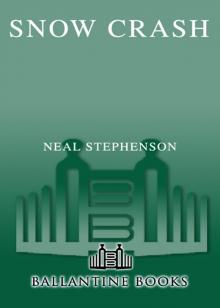 Snow Crash
Snow Crash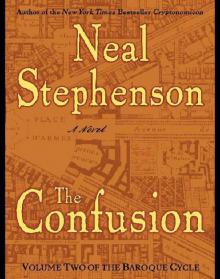 The Confusion: Volume Two of the Baroque Cycle
The Confusion: Volume Two of the Baroque Cycle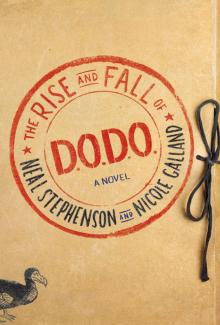 The Rise and Fall of D.O.D.O.
The Rise and Fall of D.O.D.O. The Diamond Age: Or, a Young Lady's Illustrated Primer
The Diamond Age: Or, a Young Lady's Illustrated Primer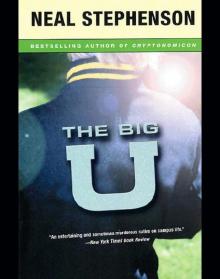 The Big U
The Big U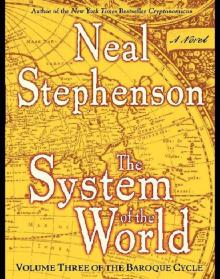 The System of the World: Volume Three of the Baroque Cycle
The System of the World: Volume Three of the Baroque Cycle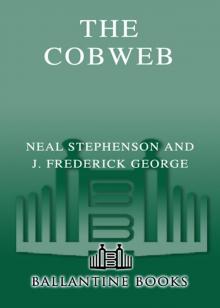 The Cobweb
The Cobweb Reamde
Reamde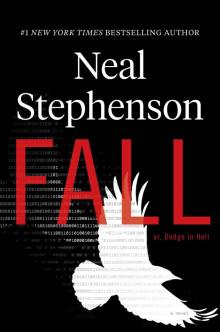 Fall; or, Dodge in Hell
Fall; or, Dodge in Hell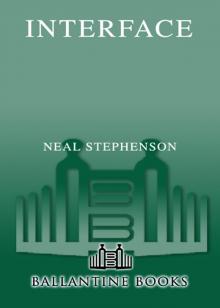 Interface
Interface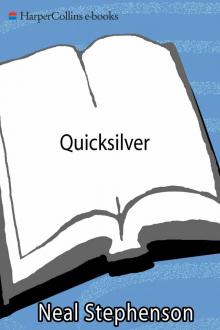 Quicksilver
Quicksilver The Mongoliad: Book Three
The Mongoliad: Book Three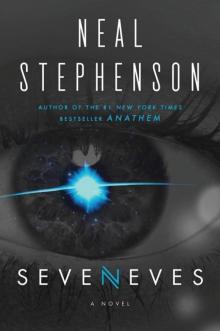 Seveneves
Seveneves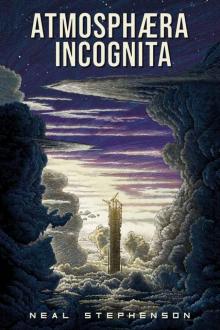 Atmosphæra Incognita
Atmosphæra Incognita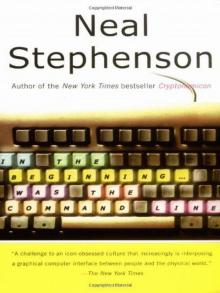 In the Beginning...Was the Command Line
In the Beginning...Was the Command Line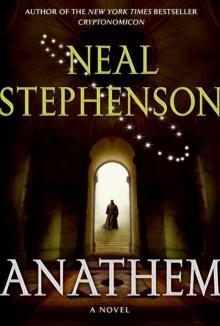 Anathem
Anathem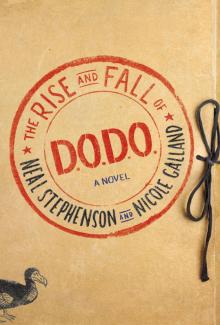 The Rise and Fall of D.O.D.O.: A Novel
The Rise and Fall of D.O.D.O.: A Novel The Mongoliad: Book Two
The Mongoliad: Book Two Diamond Age or a Young Lady's Illustrated Primer
Diamond Age or a Young Lady's Illustrated Primer THE System OF THE WORLD
THE System OF THE WORLD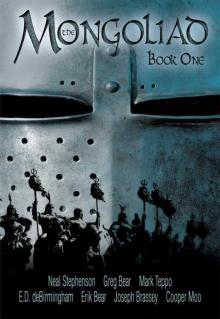 The Mongoliad: Book One tfs-1
The Mongoliad: Book One tfs-1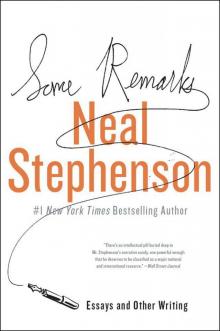 Some Remarks: Essays and Other Writing
Some Remarks: Essays and Other Writing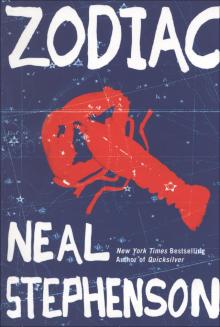 Zodiac
Zodiac Spew
Spew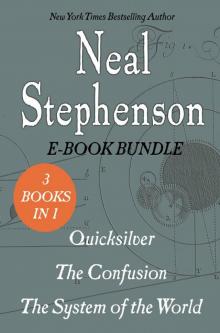 The Baroque Cycle: Quicksilver, the Confusion, and the System of the World
The Baroque Cycle: Quicksilver, the Confusion, and the System of the World The Diamond Age
The Diamond Age Reamde: A Novel
Reamde: A Novel In the Kingdom of Mao Bell
In the Kingdom of Mao Bell Mother Earth Mother Board
Mother Earth Mother Board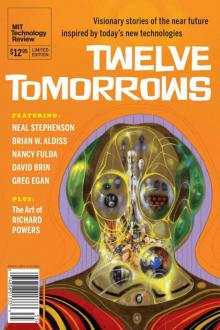 Twelve Tomorrows - Visionary stories of the near future inspired by today's technologies
Twelve Tomorrows - Visionary stories of the near future inspired by today's technologies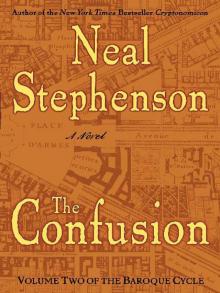 The Confusion
The Confusion The Great Simoleon Caper
The Great Simoleon Caper The Mongoliad: Book Three tfs-3
The Mongoliad: Book Three tfs-3